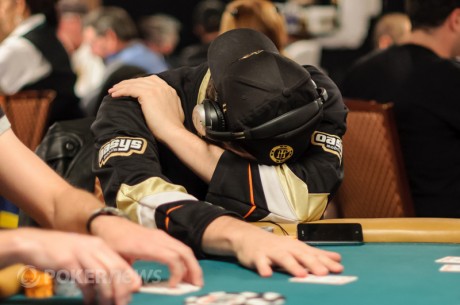The Poker Shrink, Vol 36 - Regression Toward the Mean

Regression toward the mean is the tendency for any series mathematical events to average out. This simply means that events like extreme tests scores or terrible river suckouts or 'holes-in-one' tend to happen rarely and when seen as a mathematical average this makes logical sense. This average is what we call the statistical mean score. Golf is a good example; if I have a ten handicap then I will average shooting about an 82. I should never shoot a 62 and if I don't drink or play Augusta National, I hopefully will never shoot a 102. But 90's happen, a lot, and once in a great while so do medium/low 70's.
In an article several weeks ago I said "There is no such thing as luck in poker." My argument was, and still is, that lucky is simply a lazy way to describe the laws of math as applied to poker or any other game that can involve chance. Several readers and some of my poker buddies pointed out that this "that only works if you play poker everyday and live to be 743 years old!" Long bad runs can seem like some mythical creature we want to call "bad luck" or a rigged random number generator if you play online. My argument remains the same, it is all mathematical and it will all regress towards the mean if given enough hands and enough time. But I know you "luck" fans want some proof, so I decided to try a short-term semi-scientific demonstration for you.
Here is the set-up for my test. A group of my poker buddies were in town for a long weekend of, what else, poker! After an initial briefing, I bought the drinks, I gave them 3X5 cards and asked them to keep them out on the table and mark in the left column every time a 2 or 3 or 4 outer hit post-flop. The experiment was "only" post-flop and only for 2, 3 and 4 outers. I ask them to note every time it happened at their table when it hit! and when it didn't hit. Now any poker player knows that in reality these low percentage suckouts mostly don't happen but the potential for them occurs often. So we did have the problem of staying focused to catch all the times the "luck factor" did not weigh in and snap the best hand off. We also had several math problems, like sometimes the 4 outer only comes into play after the turn or a 3 outer becomes an 11 outer when the turn makes a flush draw. I did mention that this was semi-scientific right?
Now this was a long weekend, the 7 players in the experiment played 71 tournaments over 5 days; four of the players were very diligent with their notes, most of the time; two were good but may have missed several times when the 'outer' did not hit but nearly everyone got it when the card hit (the collective "OH!" at the table helps a lot with remembering to write down the suckouts). It's a lot harder to remember to mark down when the 77 loses, like it should, to the AA.
Since you get to see the flop and at least two player's hands for a total of seven cards, usually a 2 outer has a 2 in 45 chance of hitting; a 3 outer, 3 in 45; and the 4 outer 4 in 45. Plus you get a chance on the turn and another on the river to a true post-flop "outer". Plus, we know we missed some of the instances when the miracles cards did not come and the best hand post-flop simply took down the pot. So we had another meeting, post tournament #71, in order to pick a reasonable "magic number" for the correct frequency of suck-outs (FSO). After some fairly reasonable discussion of probabilities fueled by rum; coupled with a fair assessment of the accuracy of the numbers on our 3X5 cards. Just how many times did we miss the 4 outer not hitting on the river? We added two tadpole tails, several eyes of newt, more of the aforementioned rum; shook not stirred the mixture and came up with our FSO number of 9% plus or minus .5%.
Our FSO number of 9% states that a true Regression to the Suck Out Mean would have the total number of 2, 3 and 4 outers that hit on the turn or river in our semi-scientific experiments being 9% or roughly 1 in 11. A potential 2 or 3 or 4 outer should come from behind to win the hand one in every eleven times.
The results of our Regression to the Mean experiment. In 2,844 recorded instances of 2, 3 and 4 outers; 275 hit or a 9.7% frequency, which proves beyond a reasonable scientific certainty that: "There is no luck in poker." Discuss.
Next week: Humpty Dumpty could be put back together again








